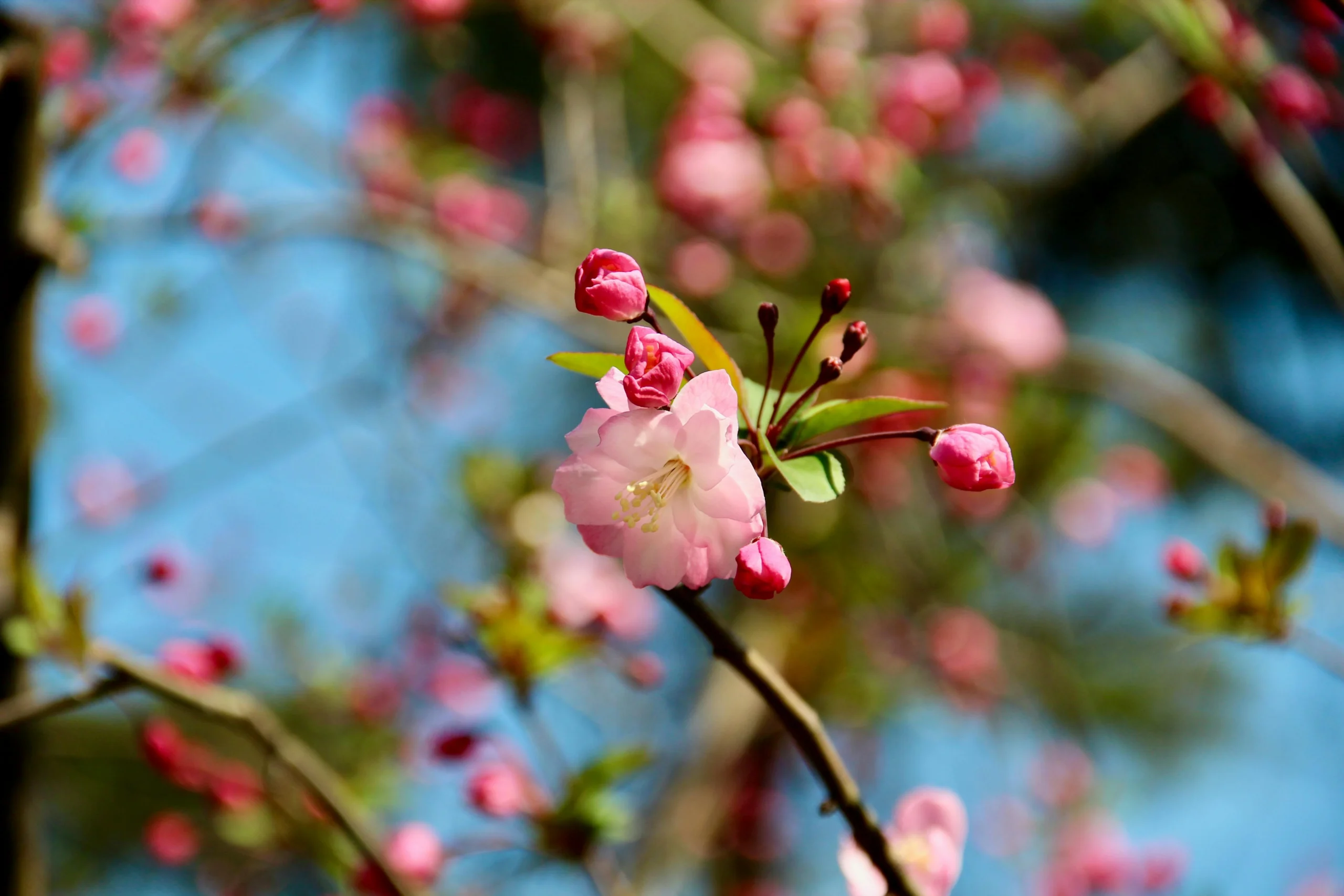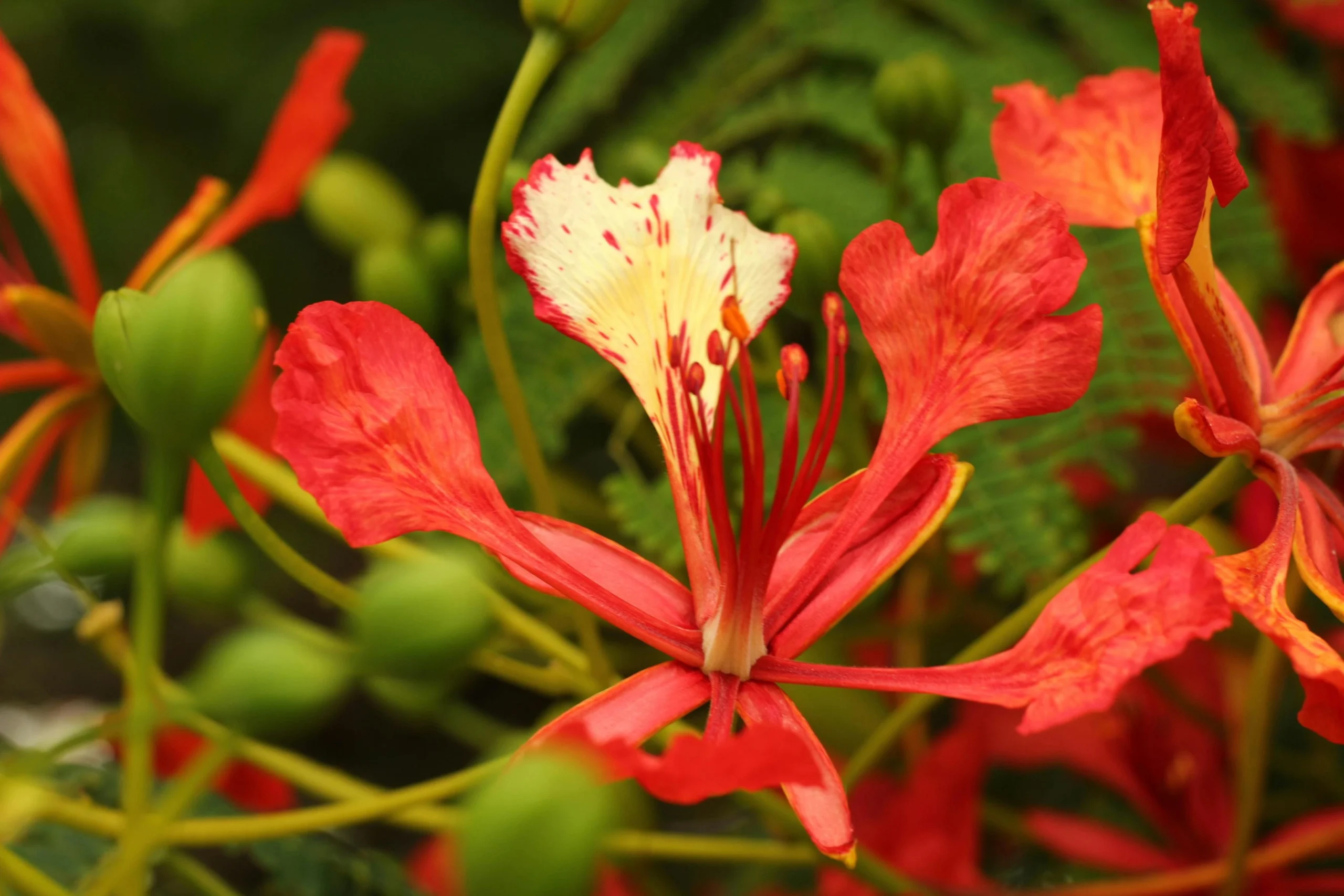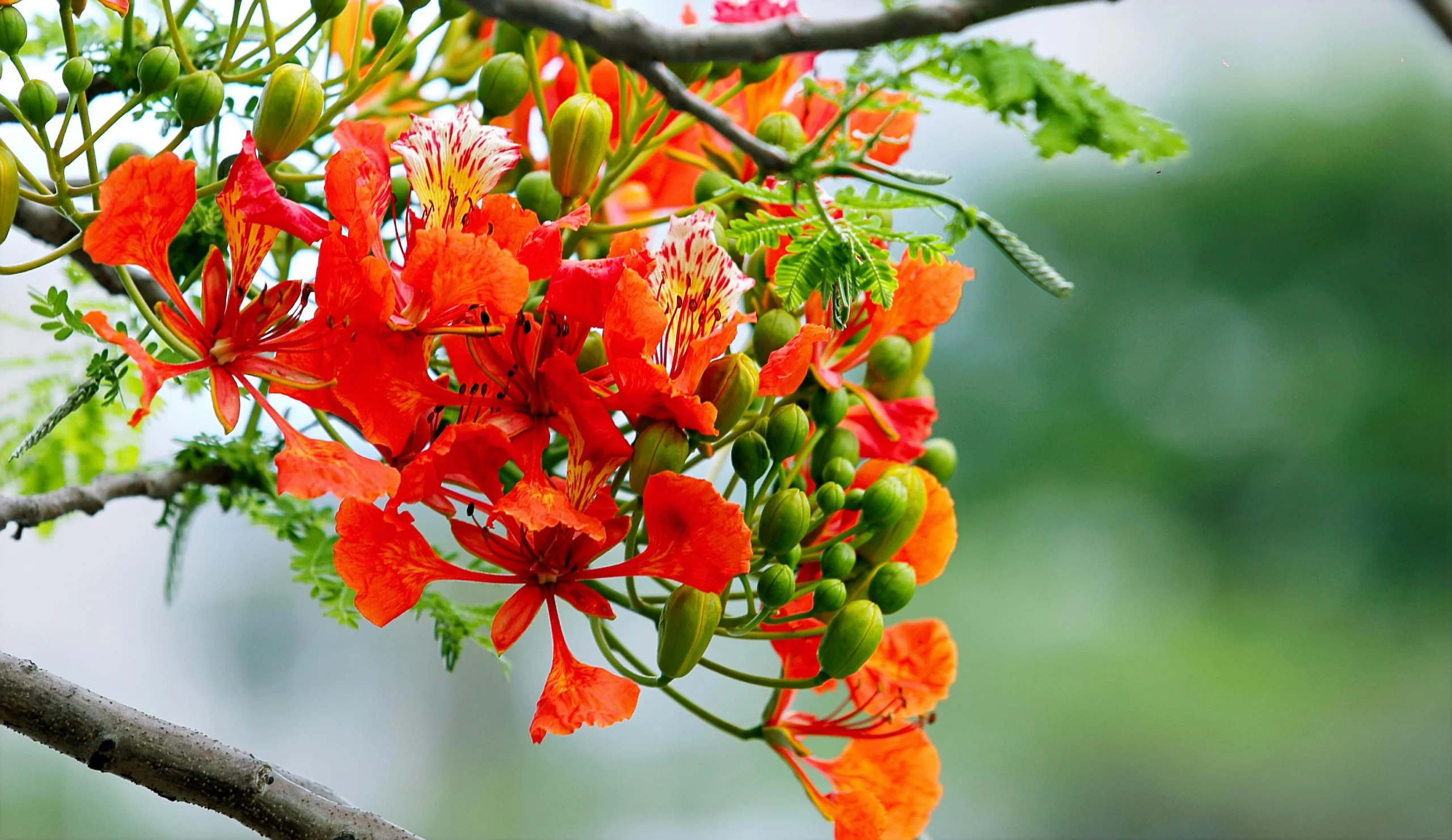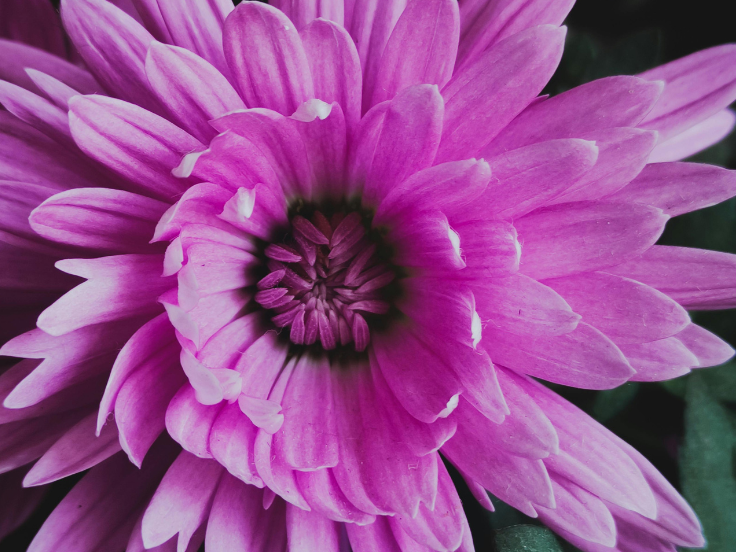Gulmohar Plant: The Flaming Beauty of Hyderabad Gardens
Introduction to the Magnificent Gulmohar Plant
The Gulmohar plant (Delonix regia) transforms the streets of Hyderabad into a vibrant canvas of color throughout summer months. With its spectacular scarlet-orange blooms and delicate fern-like leaves, this magnificent tree converts ordinary landscapes into a paradise for nature enthusiasts and photographers alike. Also known as the flame tree or royal poinciana, the Gulmohar plant represents passion, creativity, warmth, and the majesty of tropical environments across Hyderabad and beyond.
The Natural Splendor of Gulmohar Plants
Though native to Madagascar, the Gulmohar plant has earned a position of reverence in tropical regions worldwide, particularly in Hyderabad’s urban landscape. The name “Gulmohar” stems from Persian, where “Gul” means flower and “Mohr” refers to peacocks. With its flaming clusters and expansive canopy, the tree indeed resembles a dancing peacock in full glory—a fitting comparison that captures its essence.

Botanical Characteristics of Gulmohar
- Scientific name: Delonix regia
- Family: Fabaceae (legume family)
- Flowering season: April to June in Hyderabad
- Height: Can grow up to 40 feet tall
- Leaves: Feathery, delicate, and bipinnate
- Flowers: Brilliant red to orange with five petals and long stamens; the upper petal sometimes striped with white or yellow
- Appearance: Each flower resembles a delicate sunburst, adding artistic expression to gardens in Hyderabad
Cultural & Emotional Significance of Gulmohar Plants
Gulmohar trees are commonly found lining streets, decorating schoolyards, and enhancing premises across many Indian cities, especially in historic areas of Hyderabad. These majestic trees have become cherished elements of childhood memories for many Hyderabadis. For students, they signal the end of examinations and the beginning of summer vacations. For others, they evoke memories of first love, poetry written by moonlight, or long walks under a canopy of stars.
Poets, musicians, and painters from Hyderabad’s artistic community have consistently drawn inspiration from the Gulmohar. The ephemeral yet resilient bloom is often seen as a metaphor for passionate love, creative rebellion, or beauty that briefly manifests itself. Additionally, the Gulmohar plant symbolizes resilience and celebration in Indian culture, particularly in Hyderabad, as it flowers in full glory during the hottest time of the year. The blossoms are sometimes used in traditional Telangana celebrations and cultural events, especially in southern India.

The Environmental Contribution of Gulmohar Plants
Beyond its remarkable beauty, the Gulmohar plant makes numerous environmental contributions to Hyderabad’s urban ecosystem, including:
- Natural Shade: Its expansive canopy provides cool protection during Hyderabad’s intensely hot days
- Soil Protection: Its root system acts as a soil stabilizer, helping to prevent erosion in the city’s varying terrain
- Pollinator Haven: The blooms attract pollinators like bees, butterflies, and birds, helping to maintain the biodiversity of Hyderabad
While not typically used in commercial forestry due to its relatively soft wood, the Gulmohar’s ecological benefits make it an invaluable addition to any urban landscape, particularly in cities like Hyderabad that experience extreme summer temperatures.
Symbolism & Personal Connections to Gulmohar Plants
According to various cultures, the Gulmohar plant symbolizes beauty, celebration, and creative spirit. For many Hyderabadis, it’s a tree that evokes fond memories of simpler times, colorful summers, and moments of reflection beneath its flaming canopy.
Inspiration for Creatives and Business Owners
This extraordinary tree has inspired not just poets but also businesses, restaurants, art galleries, and eco-conscious companies throughout Hyderabad. The visual imagery of this specimen resonates with individuals who value aesthetic beauty, storytelling, and natural grace. If you’re an artist, writer, or dreamer in Hyderabad, the Gulmohar’s creative influence can be profound.

Growing Gulmohar Plants in Hyderabad
You can cultivate Gulmohar plants using either seeds or cuttings. The soil conditions in Hyderabad are generally suitable, though they require good drainage and plenty of sunlight to thrive. While they grow quickly, they need space to expand, making them excellent choices for planting in gardens, parks, or along roadsides throughout the city.
For expert guidance on growing and maintaining Gulmohar plants in your Hyderabad garden, visit Gulmahal’s plant care section or consult with specialists at Hyderabad Botanical Garden.
Conclusion: The Enduring Appeal of Gulmohar Plants
The Gulmohar plant is more than just a flowering tree; it’s an experience, a season, and a representation of life in full bloom. Its rich hues, poetic appeal, and emotional resonance continue to make it one of the most spectacular and magnificent contributions that nature has to offer to Hyderabad’s landscape.
Whether you admire the Gulmohar for its beauty, its symbolism, or the memories it evokes, it truly deserves its title as the “flame of the forest” and remains one of Hyderabad’s most beloved trees. Visit Gulmahal Flowers to learn more about incorporating this stunning plant into your garden or landscape design in Hyderabad. Written By : Bhawna Joshi
When is the best time to plant Gulmohar trees in Hyderabad?
The ideal time to plant Gulmohar trees in Hyderabad is during the monsoon season (June-September) when natural rainfall helps with establishment. Early spring is also suitable if adequate irrigation is provided.
How long does it take for a Gulmohar plant to flower?
Gulmohar plants typically begin flowering after 4-5 years of growth. In Hyderabad’s climate, they produce their spectacular blooms annually between April and June.
Are Gulmohar plants suitable for home gardens in Hyderabad?
While beautiful, Gulmohar plants grow quite large and are better suited for spacious gardens, parks, or avenue plantings in Hyderabad. For smaller home gardens, consider dwarf varieties or alternative flowering trees.
Do Gulmohar plants cause any allergies?
Some individuals may experience mild allergic reactions to Gulmohar pollen during peak flowering season. Those with known plant allergies should exercise caution when spending extended time under these trees when in full bloom.
How can I use Gulmohar flowers in traditional Hyderabadi decor?
Gulmohar flowers make striking additions to traditional Hyderabadi event decorations, particularly for summer celebrations. They can be used in garlands, table centerpieces, or floating arrangements in water features to showcase local botanical heritage.









